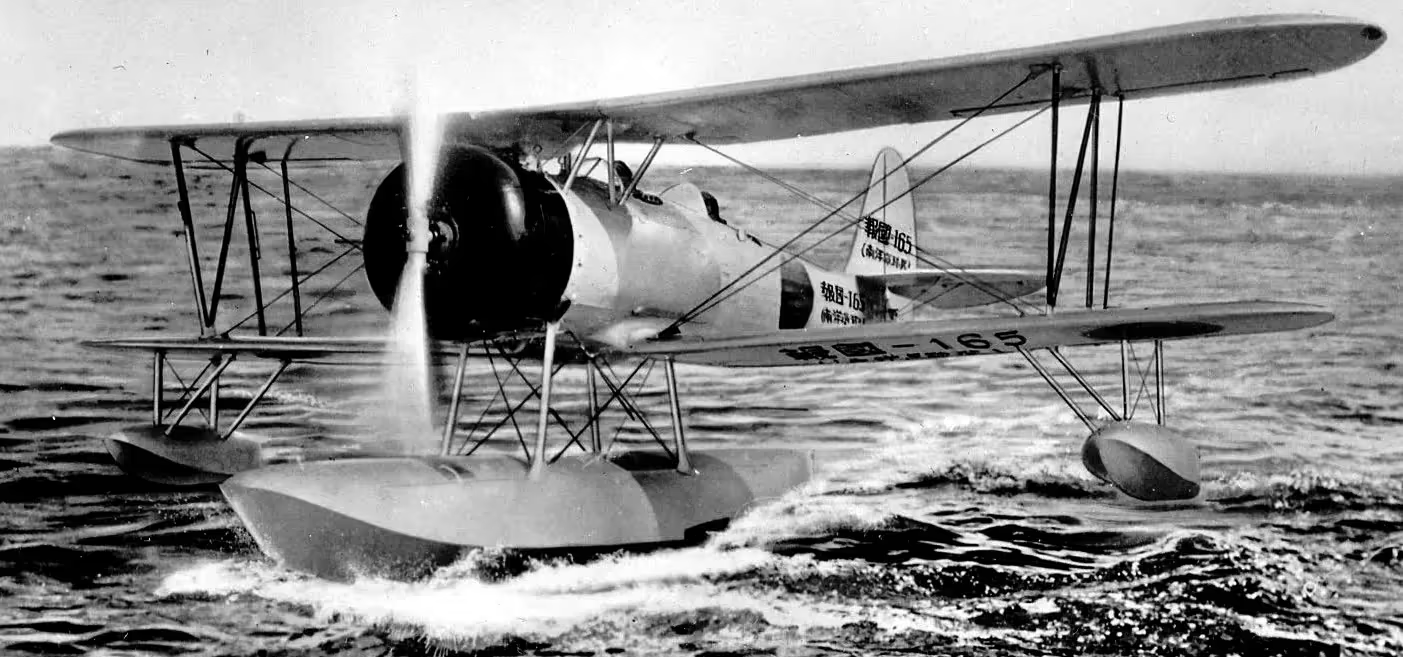Warplanes of Japan: Nakajima E8N
Nakajima E8N


(IJNAF Photos)
The Nakajima E8N was a Japanese ship-borne, catapult-launched, reconnaissance seaplane of the Second Sino-Japanese War. It was a single-engine, two-seat biplane with a central main-float and underwing outriggers. During the Pacific War, it was known to the Allies by the reporting name "Dave". This aircraft was identified by the British as the Nakajima KT-95 Dave.
The E8N was developed as a replacement for the same company's E4N and was essentially an evolutionary development of the earlier reconnaissance seaplane, with revised wings of lesser area and taller tail surfaces. Seven prototypes were constructed, under the company designation MS, first flying in March 1934. These were duly engaged in comparative trials against competitors from Aichi and Kawanishi, with the E8N being the preferred option due to its superior manoeuvrability and ruggedness.
The MS was ordered into production, designated Navy Type 95 Reconnaissance Seaplane Model 1 in October 1935.[4] A total of 755 E8Ns were built by Nakajima and Kawanishi, production continuing until 1940.[5] It was subsequently shipped aboard all the capital ships then in service, 16 cruisers and five seaplane tenders. It was used successfully in the Second Sino-Japanese War not only for reconnaissance, but also for dive-bombing and artillery spotting.
One E8N was purchased in early 1941 by the German Naval Attache to Japan, Vice-Admiral Paul Wenneker, and dispatched on board the KM Münsterland to rendezvous with the German auxiliary cruiser Orion at the Maug Islands in the Marianas. The meeting occurred on 1 February 1941, and Orion thus became the only German naval vessel of the Second World War to employ a Japanese float plane.
The Royal Thai Navy placed an order for eighteen E8Ns in 1938. After delivery in 1940, they were reclassified as the BRN-1, but did not see any combat action until 1945, responding to the Allies Operation Livery. One BRN-1 was totally destroyed and two others were written off. The remaining fifteen served on after the war until lack of spare parts resulted in their decommissioning and scrapping. Some aircraft remained in service with the fleet at the outbreak of the Pacific War, and one flew reconnaissance from the battleship Haruna during the Battle of Midway. In general, though, they were soon replaced by more modern aircraft such as the Aichi E13A and the Mitsubishi F1M and reassigned to second-line duties, such as a seaplane trainer, communications and liaison work. (Wikipedia)

(IJNAF Photo)
Nakajima E8N ship-borne, catapult-launched, reconnaissance seaplane of the Second Sino-Japanese War. It was a single-engine, two-seat biplane with a central main-float and underwing outriggers. During the Pacific War, it was known to the Allies by the reporting name "Dave".

(IJNAF Photo)
A Nakajima E8N ‘Dave’ seaplane prepares to launch from the battleship Haruna.





(IJNAF Photos)
Nakajima E8N.

(RN Photo)
Nakajima E8N1 "Dave" aboard Ship 36 HSK I Orion.
One Nakajima E8N1 Dave was in service on board the auxiliary cruiser Orion. The fuselage insignia were overpainted with fictitious RAF roundels and white serial number L 5196. On 26 May 1941 there was an accident during take-off and the E8N1 with pilot Oblt. zur See Klaus von Winterfeld and observer Oberflugmeister Pässler sunk in a position east from Madagascar 18°52’ S and 51°06’ O. (Miro Herold)





